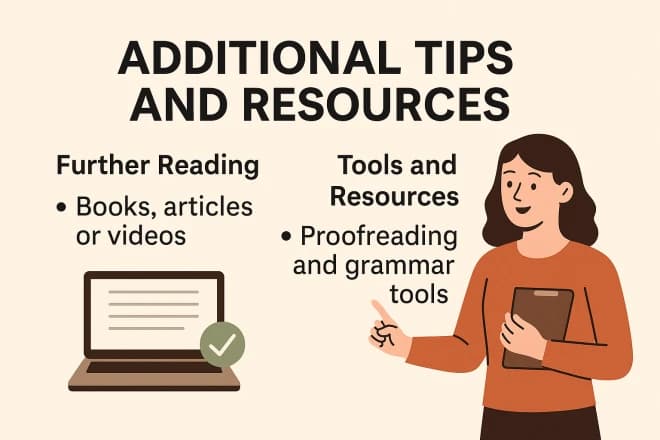Unlock Insights: Find the Answers You Seek on Our Blog
How to Split Text into Paragraphs: Word vs. AI Splitter (2025 Speed Test)
By Evelyn Sterling
Formatting long text into clean, readable paragraphs sounds simple—until you actually try to do it. Whether you’re cleaning up text copied from the web, organizing messy notes, or preparing a long document, manually creating paragraph breaks can take much longer than expected.
Most people turn to Microsoft Word to fix formatting.It works—but only up to a point.
In this guide, you’ll see how to split text into paragraphs in Word, what problems usually appear, and when an AI text splitter can save you a lot of time.
This is a practical, experience-based comparison to help you choose the right method for the text in front of you.

Why Long, Unformatted Text Is So Hard to Fix
If you’ve ever pasted text from a website, PDF, or email, you’ve likely seen something like this:
- All the sentences merge together
- No visual breaks
- Each idea blends into the next
- Hard to skim or study
For short text, manually pressing Enter works fine.
But when the text runs for pages, the frustration grows quickly:
- You lose track of where one idea ends and another begins
- Word sometimes refuses to break a line where you expect
- Extra spaces appear
- Fixing one part breaks another
These are common issues users face—which is exactly why many start looking for faster solutions.
Method 1 — How to Split Text Into Paragraphs in Microsoft Word
Word remains the most familiar tool for editing text.
But its options for automatically splitting long text are limited.
Below are the real ways people actually use Word to break text into paragraphs, along with their strengths and weaknesses.
1. Manual Paragraph Breaks (Best for Short Text Only)
The simplest method:
Place your cursor
Press Enter to create a new paragraph
This is fine for a short introduction or a small email, but for multi-page pasted text or transcripts, it becomes exhausting.
Pros
- ✅ Completely predictable
- ✅ Easy for beginners
Cons
- ❌ Slowest possible method
- ❌ Hard to maintain consistent spacing
- ❌ Mistakes are easy to miss
2. Use Find & Replace to Add Paragraph Breaks Automatically
If you have a long block of text, Word’s Find and Replace can insert paragraph breaks after certain punctuation.
Steps:
- Press Ctrl + H (Windows) or Command + H (Mac)
- In “Find what,” enter:
. - In “Replace with,” enter:
.^p - Click Replace All
Word will insert a paragraph break after every period.
Real-world issues users often experience
These are based on actual user scenarios:
- Abbreviations break incorrectly
“U.S.” → becomes
U.
S. - Decimal numbers split
“The value is 3.14” →
“The value is 3.
14” - Honorific titles break
“Dr. Smith” →
“Dr.
Smith” - Sentences become too short
Word creates “one-sentence paragraphs” that don’t reflect actual ideas
Pros
- Faster than manual
- Works for medium-length text
Cons
- Requires cleanup
- Often introduces new formatting errors
- Not suitable for messy web text or transcripts
Method 2 — Using an AI Text Splitter (Fastest for Long or Messy Text)
AI text splitters analyze the structure of your writing and automatically create:
- Natural paragraphs
- Clean spacing
- Logical grouping of ideas
- Readable flow
Instead of relying on punctuation rules (which often fail), AI looks at meaning and structure.
Where AI Outperforms Word (Real Examples)
Example Original Text (Unformatted):
“Artificial intelligence is transforming how people write study and communicate students now use AI tools for notes while bloggers rely on them for drafts but text copied from websites often loses formatting making it difficult to read.”
Word Manual Method Output:
Breaks must be added manually (~12 clicks).
Spacing inconsistencies appear.
AI Text Splitter Output:
“Artificial intelligence is transforming how people write, study, and communicate.
Students now use AI tools for notes, while bloggers rely on them for drafts.
But text copied from websites often loses formatting, making it difficult to read.”
→ Clean breaks
→ Ideas grouped logically
→ Zero manual work
Why AI works better for long or messy text
- Detects where ideas naturally shift
- Avoids breaking abbreviations or numbers
- Handles large blocks without lag
- Maintains consistent spacing
Ideal for study notes, transcripts, essays, and draft cleanup
Word vs. AI Text Splitter — Practical Comparison
| Feature | Microsoft Word | AI Text Splitter |
|---|---|---|
| Speed | Slow or moderate | Instant |
| Accuracy | Depends on user | High |
| Cleanup needed | Yes | Minimal |
| Handles messy text | Poor | Excellent |
| Formatting consistency | Inconsistent | Very consistent |
| Best for | Short, clean text | Long or pasted text |
When Should You Use Each Method?
Use Word if:
- You are already editing a document inside Word
- The text is short
- You want full manual control over formatting
Use an AI Text Splitter if:
- You pasted a long block of text
- You need readable paragraphs instantly
- You’re cleaning up notes, transcripts, or copied articles
- You want consistent spacing without manually fixing mistakes
In most modern workflows—especially for students, bloggers, and writers—AI is simply faster and cleaner.
Try It Yourself — Split Your Text Automatically
If you want to create clean paragraph breaks instantly,
try the AIFreeBox AI Text Splitter.
It:
Breaks long text into readable sections
Groups ideas naturally
Fixes spacing
Works free and without sign-up
Perfect for essays, blog drafts, study notes, and any long-form text.
Final Thoughts
Splitting text into paragraphs seems simple—until the document grows long or messy.
Word still works for short, simple formatting tasks, but AI tools handle the heavy lifting for longer content.
A practical workflow many people use:
- Use AI for instant cleanup
- Use Word for final touches
This gives you the best of both worlds: speed + precise control.
AI Tools Categories
Browse all AI tools by category
All AI Tools
229Amazon
5AI Writing Generator
85Article & Content Writing
35Branding & Identity
54Content Generation
170Creative Ideas
32Educational Resources
34E-commerce
14Etsy
6Events & Celebrations
13Facebook
6Gaming & Fun
5Instagram
3Lifestyle & Personal
8LinkedIn
6Marketing & SEO
40Poem & Lyrics Writing
19Professional Documents
31Social Media
44Story & Book Writing
49Text Effects
14TikTok
7Twitter
3Writing Enhancement
36YouTube
11
Highly rated and most popular AI tools curated by our experts
Recently added AI tools that are gaining traction
- AI Post Generator

- AI Bullet Point Generator

- AI Discussion Post Generator

- AI 2 Weeks Notice Letter Generator

- AI Content Creation Ideas Generator

- AI Radio Ad Script Generator

- AI Podcast Script Generator

- AI Resume Objective Generator

- AI Resume Headline Generator

- AI Avast Password Generator

- AI Snapchat Caption Generator

- AI Snapchat Username Generator

- AI Pinterest Board Name Generator

- AI LinkedIn Experience Description Generator

- AI Twitter Hashtag Generator

- AI YouTube Short Idea Generator

we prioritize displaying the latest content closely related to the current blog post.







